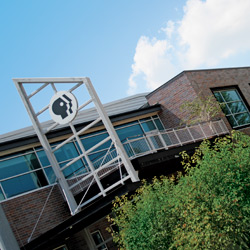Emerging Technologies & the Junk Drawer

Thanks to digital technologies, broadcasters can no longer afford just to be in the “television biz.”
You likely have a drawer cluttered with relics of obsolete technologies, tangled with chargers, dingles, dongles and other doodads that you can no longer identify or pair with their mother ship. There are probably dead cameras, old cell phones, cassette players and a few random cords. This is the flotsam and jetsam of the age of disposable technology, and it’s only a microcosm of what broadcasters deal with on a regular basis.
The Transition to Digital
On the television side, the transition from analog to digital and high-definition broadcasting started in 1998. The Federal Communications Commission ordered all broadcasters to convert to a digital standard of broadcasting by 2003, so as to start consolidating bandwidth for cell phones and other wireless devices. The freed bandwidth was then auctioned, and the proceeds devoted by the Clinton administration to balancing the federal budget.
The conversion to digital broadcasting proceeded apace, not in response to any great market forces or hue and cry from consumers, but rather to stay in business—no conversion, no FCC-issued license.
TV broadcasters had to design from scratch systems for delivering digital and high-definition signals, spend untold millions on acquisition and installation of new equipment, broadcast in both analog and digital, and finally in 2009, digital only...even if only to deliver to a viewer’s converter box that turned the digital signal back into analog. This left us with a junk drawer of our own.
There are transmitter buildings across the country that still hold old analog transmitters and klystron tubes because they are prohibitively expensive to dispose of or may potentially pollute landfills. And besides, broadcast engineers tend to be packrats and might yet find some use for a left-handed framowitz.
Keeping up with technology continues to be a very expensive process. Analog broadcasting was more than 70 years old and had pretty much reached its zenith (sorry) by the end of the 20th century. Analog equipment was consistent, reliable and fairly interchangeable, and could usually be depreciated over nine years or more. Digital is still in its infancy, and the life expectancy of digital equipment is about three years—based on obsolescence, not failure. This constant need for upgrading has a tremendous impact on capital and maintenance budgets, and it can severely impact the resources available for creation of programming and related content. It also causes a sea change in the workforce. Engineers who were once proficient in RF technology now are computer (IP) literate “technicians” replacing motherboards rather than soldering transistors and resistors.
Proactive Engagement in New Technology
Thanks to digital and what it makes available, broadcasters can no longer afford just to be in the “television biz.” We have to be very proactively engaged in those new and emerging technologies, not just passive bystanders. Whether Internet, iPod, Facebook, video game, smartphone or electronic book, we have to find a way to include them in our business plan and as part of our own delivery system. We have to embrace them, adapt our content to interface with them, and use them as additional means to reach our viewers. In short, we have to become platform-agnostic.
Many local stations are already heading in that direction through the use of their websites. More and more station websites are becoming increasingly sophisticated and useful to local audiences. Information tied to programming, more in-depth news stories, features and more are making the sites more useful and successfully addressing the question of whether there is still a relevant media role for local stations.
One special thing we are doing beyond just the standard website is using the power of the Internet and PBS programming to foster classroom innovation and engagement. Beginning in September, WTVP will introduce PBS LearningMedia, a free service for all teachers, students and families.
Delivering unprecedented access to a robust digital library aligned to Common Core State Standards and available to all preK-16 classrooms, PBS LearningMedia is the next generation in digital media platforms with high-quality content— such as WGBH's NOVA science series, among many others—drawn from more than 1,500 public media producers and 350 local stations.
Teachers and students will have immediate access for their lessons and homework to more than 14,000 research-based instructional resources including videos, interactives, images, audio files, mobile apps, lesson plans and worksheets. Through PBS LearningMedia, teachers can: quickly and easily find relevant resources, localized to their needs, to differentiate instruction for a diverse range of learners; personalize the site by tagging resources and sharing ideas; recommend and comment on how they've used media assets in their teaching with their professional learning networks via email or social media tools such as Facebook and Twitter; and develop "class pages"—curated content lists—for student viewing, feedback and instruction on interactive white boards and school-based intranets and other networking tools. Further information will be available at wtvp.org.
As new technologies and applications emerge, and we make room for them by adding old, obsolete equipment and thinking to our junk drawers, we are left with two truths:
- Truism One: Information technology is moving at warp speed. The anchor dragging behind is our ability to make it adaptable, useful and affordable.
- Truism Two: Content is king. Technology for the sake of technology is nothing but gimcrackery. Useful technology is that which helps the user better receive, perceive, understand, create and communicate. iBi
Chet Tomczyk is president and CEO of WTVP, public television for central Illinois.

